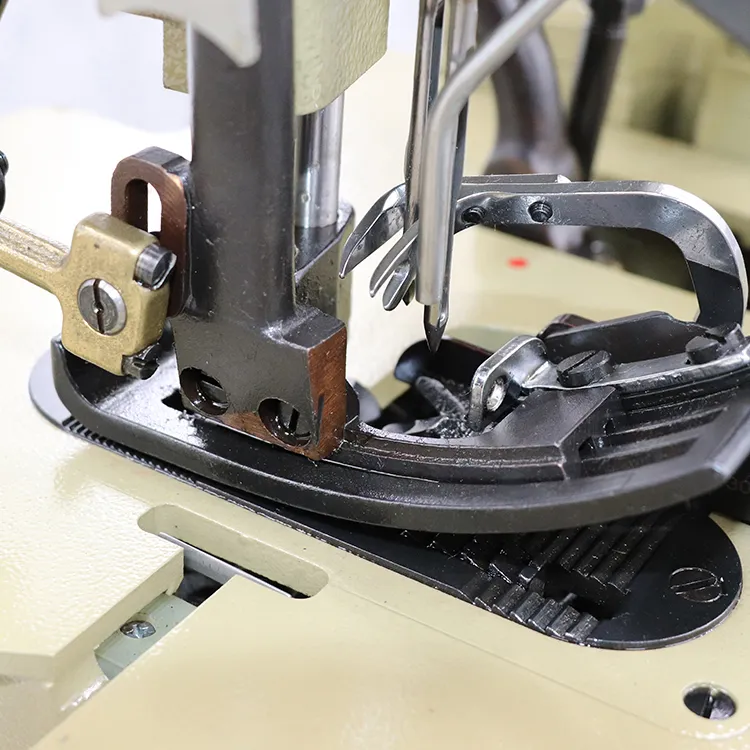direct drive lockstitch sewing machine
Direct Drive Lockstitch Sewing Machines Revolutionizing the Textile Industry
The textile industry has witnessed a plethora of advancements over the years, but few innovations have had as profound an impact as the direct drive lockstitch sewing machine. This technology eliminates many traditional mechanical components, leading to improved efficiency, precision, and sustainability—attributes that are integral in today’s fast-paced fashion and manufacturing environments.
What is a Direct Drive Lockstitch Sewing Machine?
A direct drive lockstitch sewing machine employs a motor that is directly attached to the sewing head, unlike conventional machines that often use a belt mechanism to transfer power from the motor to the needle. This direct connection minimizes energy loss that typically occurs during power transmission, resulting in a more efficient machine that consumes less electricity. Moreover, the direct drive system reduces noise and vibration, creating a more pleasant working environment for operators.
Enhanced Precision and Performance
One of the primary advantages of direct drive lockstitch machines is their enhanced precision. The direct connection between the motor and the sewing head allows for instantaneous and accurate needle movements. This leads to improved stitch quality and uniformity, which are critical factors in garment manufacturing. The machines also offer advanced features like automatic thread trimming, programmable stitch patterns, and customizable sewing speeds, allowing operators to achieve precise results while reducing the time spent on manual adjustments.
Moreover, these machines can handle a variety of materials—from delicate fabrics to heavy-duty textiles—making them versatile tools in the production line. The adaptability further enhances their appeal in various sectors of the textile industry, from high fashion to mass production.
Environmental Sustainability
direct drive lockstitch sewing machine

As sustainability becomes increasingly important in the fashion industry, direct drive lockstitch sewing machines offer an eco-friendly alternative to traditional sewing machines. The reduction in energy consumption not only lowers operational costs but also decreases the carbon footprint associated with manufacturing processes. Many models are designed with energy-efficient practices in mind, including sleep modes that reduce power usage during periods of inactivity.
Furthermore, the precision of direct drive machines minimizes material waste, as they facilitate more accurate cutting and stitching. In an industry grappling with significant waste concerns, this benefit cannot be overstated.
User-Friendliness and Technological Integration
The direct drive lockstitch sewing machine typically features user-friendly interfaces that streamline operations. Many models come equipped with digital displays that provide real-time feedback on machine performance, stitch counts, and maintenance reminders. This accessibility empowers operators, allowing them to monitor and adjust settings quickly, thus enhancing productivity.
Additionally, technological integration is at the forefront of these machines, with many units compatible with software for pattern design and production tracking. This seamless integration simplifies the complexities of modern textile production, ensuring that manufacturers remain competitive in a rapidly evolving market.
Conclusion
The advent of direct drive lockstitch sewing machines represents a significant leap forward in the textile industry. With their energy efficiency, enhanced precision, and user-friendly designs, these machines are setting a new standard for sewing technology. As manufacturers continue to prioritize sustainability and efficiency, direct drive systems are poised to lead the way in revolutionizing garment production. By adopting these advanced machines, companies not only improve their operational outcomes but also contribute to a more sustainable future for the textile industry. The move toward direct drive technology underscores the commitment to innovation that will shape the future of sewing, positioning it as an indispensable asset for manufacturers aiming to thrive in an increasingly competitive landscape.
-
Boost Production Efficiency with a Pattern Sewing MachineNewsAug.29,2025
-
Industrial Excellence with the Best Heavy Duty Sewing MachineNewsAug.29,2025
-
Precision and Power with the Best Pattern Sewing MachineNewsAug.29,2025
-
Reliable Bulk Packaging Starts With the Right FIBC Sewing MachineNewsAug.29,2025
-
Advanced Packaging Solutions: Elevate Productivity with Jumbo Bag Sewing Machine and Industrial Stitching EquipmentNewsAug.29,2025
-
High-Performance Solutions for Bulk Packaging: FIBC Sewing Machine and MoreNewsAug.29,2025
-
Maximize Efficiency with an Industrial Cylinder Arm Sewing MachineNewsAug.28,2025


























